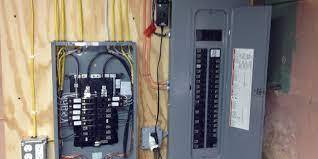
Understanding Sub Panels and Their Role in Solar Energy Systems
Introduction:
As the world pivots towards renewable energy sources, solar power has emerged as a leading contender in the quest for sustainability. With the installation of solar panels becoming increasingly common in both residential and commercial settings, it's essential to comprehend the various components involved in a solar energy system. One such crucial component is the sub panel, which plays a significant role in optimizing the efficiency and safety of solar installations.
What is a Electrical Sub Panel?
A sub panel, also known as a subsidiary panel or distribution panel, is an additional circuit breaker panel separate from the main electrical panel of a building. It serves as an extension of the primary panel, allowing for the distribution of electricity to specific areas or systems within a structure. Sub panels are commonly installed to accommodate additional circuits when the main panel has reached its capacity or to provide power to distant parts of a building.
Components and Functionality:
Similar to the main electrical panel, a sub panel comprises circuit breakers or fuses, bus bars, and terminals for connecting wires. The primary function of a sub panel is to distribute electricity from the main panel to various circuits within a building. It allows for better organization of electrical wiring and ensures that power is delivered safely and efficiently to different areas.
Role of Sub Panels in Solar Energy Systems:
In the context of solar energy systems, sub panels play a crucial role in integrating solar power into the existing electrical infrastructure of a building. When a solar photovoltaic (PV) system is installed, it generates DC (direct current) electricity, which must be converted into AC (alternating current) electricity for use in homes or businesses. This conversion is typically facilitated by an inverter, which is often installed near the main electrical panel.
Once the solar energy is converted into usable AC electricity, it is either consumed immediately by the building's electrical loads or fed back into the grid if the system is grid-tied. In either case, the sub panel comes into play to manage the distribution of solar-generated electricity to specific circuits within the building. Dedicated circuits can be established in the sub panel to power essential loads such as lighting, appliances, or HVAC (heating, ventilation, and air conditioning) systems.
Benefits of Sub Panels in Solar Installations:
1. Enhanced Flexibility: Sub panels provide flexibility in the allocation of solar power to different areas of a building. This allows for customization based on energy needs and priorities.
2. Efficient Energy Management: By segregating circuits in the sub panel, solar energy can be directed to critical loads, optimizing energy usage and reducing dependency on the grid.
3. Scalability: Sub panels enable the expansion of solar installations by accommodating additional circuits or electrical loads as needed, without overloading the main electrical panel.
4. Improved Safety: Properly installed sub panels enhance electrical safety by reducing the risk of overloads and short circuits, thereby protecting both the solar system and the building's electrical infrastructure.
Conclusion:
Sub panels play a vital role in the integration of solar energy systems into residential and commercial buildings. By facilitating the distribution of solar-generated electricity to specific circuits, sub panels enhance efficiency, flexibility, and safety in solar installations. Understanding the function and significance of sub panels is essential for optimizing the performance and longevity of solar energy systems, contributing to a more sustainable energy future.
What do you think? Leave a comment.